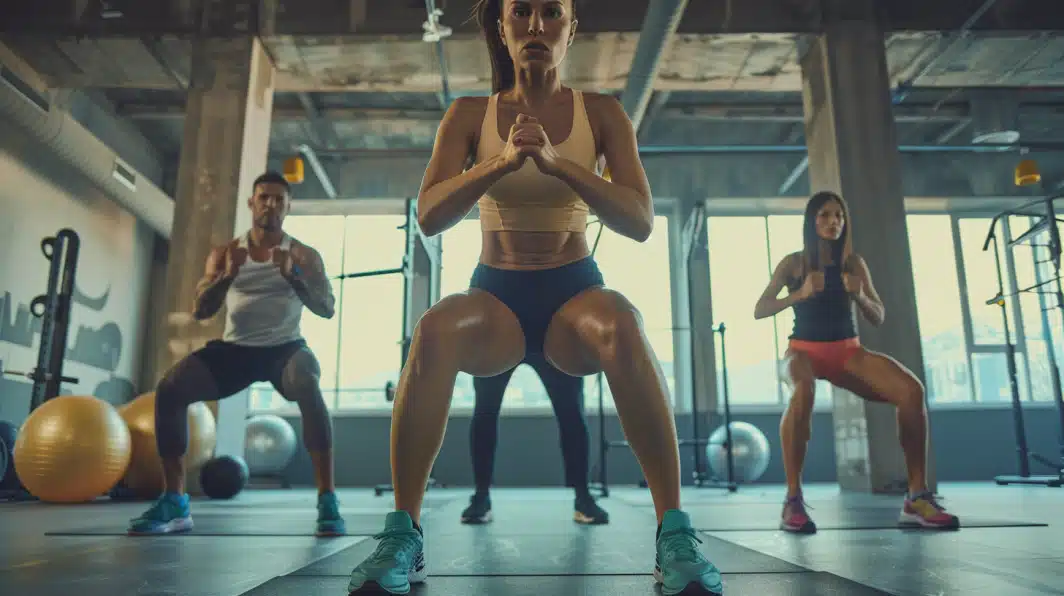15 Effective J Exercises to Jumpstart Your Fitness Routine
Are you looking to jumpstart your fitness routine with some effective exercises? You’re not alone.
Many struggle to find engaging and efficient workouts targeting multiple muscle groups. Fortunately, several exercises begin with the letter “J” to help you achieve your fitness goals.
This blog post will explore 15 powerful J exercises to boost strength, endurance, and well-being.
From classic moves like jumping jacks and jogging to lesser-known exercises like Janda sit-ups and javelin throws with a medicine ball, you’ll discover various techniques to keep your workouts fresh and challenging.
Get ready to energize your fitness journey and take your workouts to the next level with these dynamic J exercises.
15 Exercises that Start with J
1. Jumping Jacks
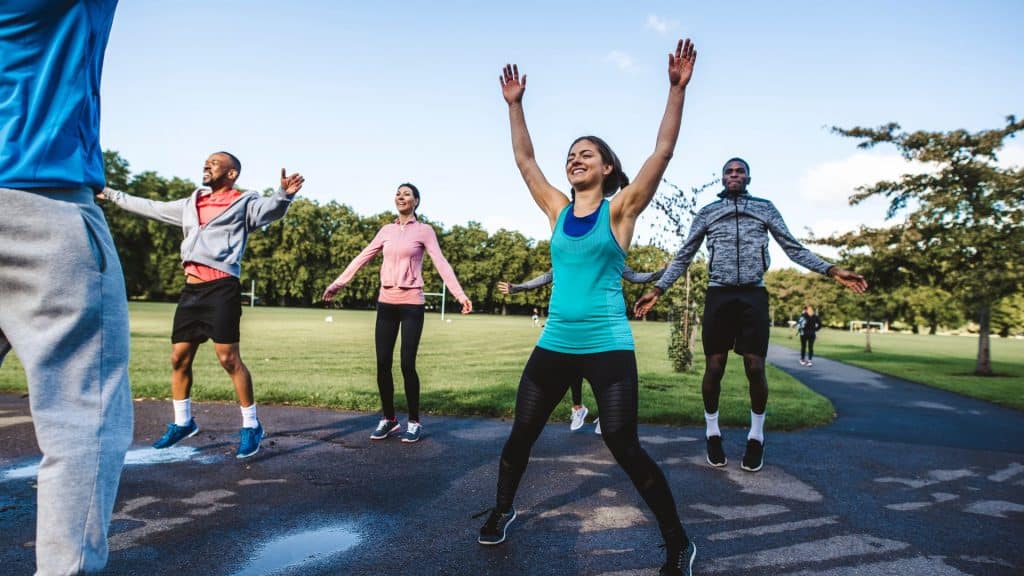
Jumping jacks are a classic cardiovascular exercise that can improve your endurance and get your heart pumping.
This full-body workout is easy to perform and requires no equipment, making it perfect for home workouts or warming up before more intense exercises.
How to Perform
- Stand with your feet together and your arms at your sides.
- Jump your feet to the sides while raising your arms above your head.
- Jump your feet back together and lower your arms to the starting position.
- Repeat the movement continuously for the desired duration.
2. Jump Squats
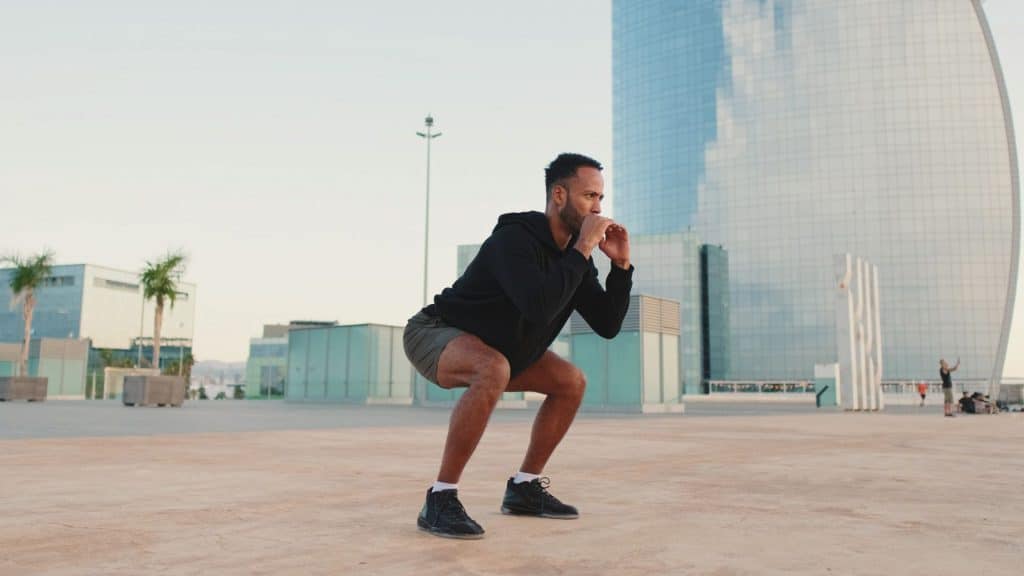
Jump squats are excellent for building lower body strength and explosive power.
This plyometric movement targets your quads, hamstrings, and glutes while providing a cardiovascular challenge.
How to Perform
- Start with your feet shoulder-width apart and your hands clasped behind your head or chest.
- Lower your body into a squat position, keeping your chest and weight in your heels.
- Explosively jump upward, extending your legs and reaching your arms overhead.
- Land softly on the balls of your feet, immediately lowering back into the squat position.
- Repeat the movement for the desired number of repetitions.
3. Jogging in Place
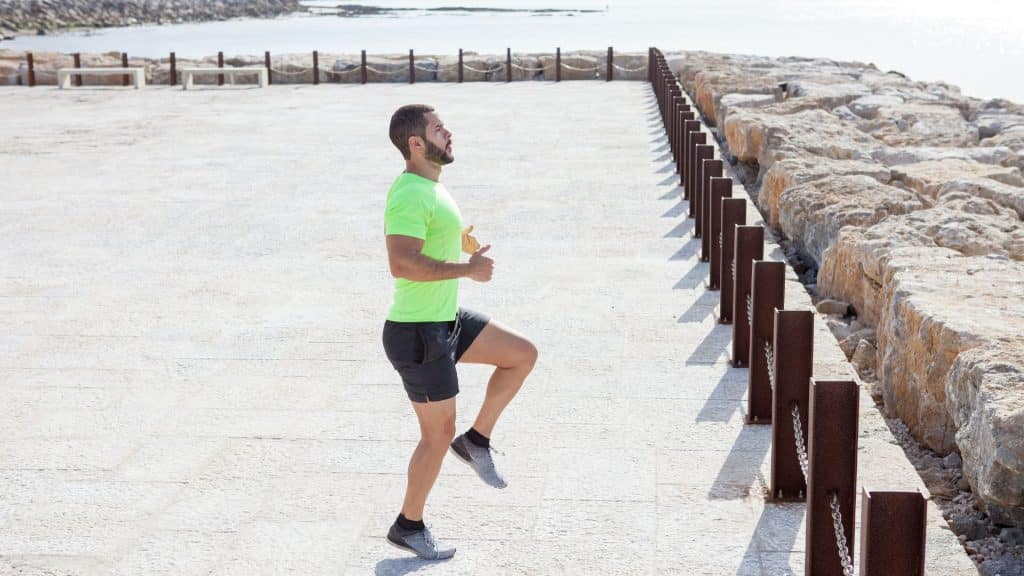
Jogging in place is a simple yet effective cardio exercise that can be done anywhere, anytime.
This low-impact movement helps improve cardiovascular endurance and can serve as a great warm-up or standalone workout.
How to Perform
- Stand with your feet hip-width apart and your arms bent at a 90-degree angle.
- Lift one foot off the ground and bring your knee towards your chest.
- Lower your foot back to the ground and repeat the movement with the opposite leg.
- Continue alternating legs at a comfortable pace, mimicking a jogging motion.
4. Jump Rope

Jumping rope is a full-body workout with numerous benefits, including improved coordination, agility, and cardiovascular endurance.
This versatile exercise can be performed with various techniques to keep your workouts engaging and challenging.
Some jump rope variations to try
- Basic bounce: Jump with both feet together, making small hops over the rope.
- Alternate foot jump: Jump with one foot at a time, alternating between your right and left foot.
- High knees: Jump while bringing your knees up towards your chest with each rope rotation.
- Double unders: Swing the rope twice around your body for every single jump.
5. Jackknife Sit-Ups
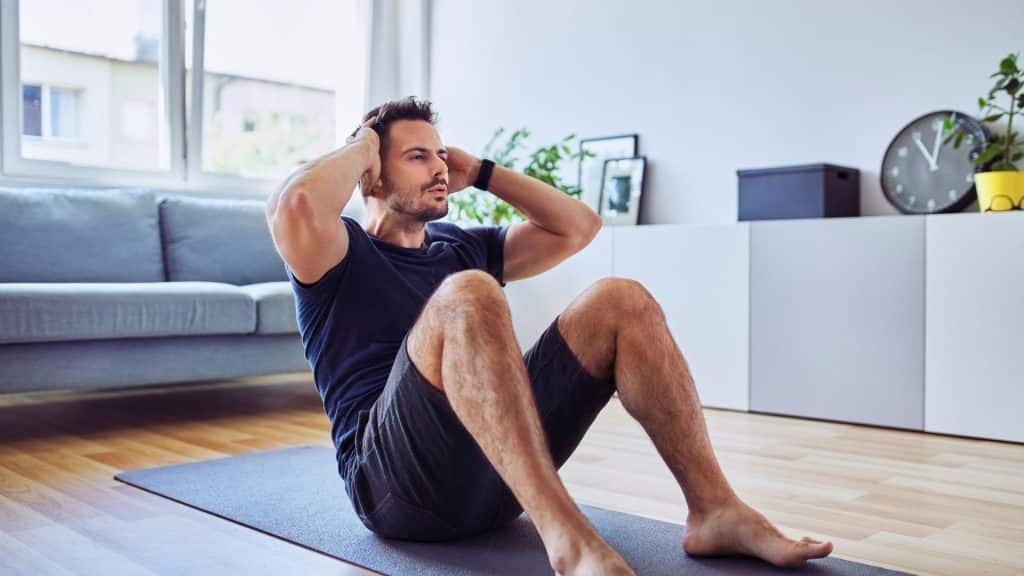
Jackknife sit-ups are a challenging core exercise that simultaneously targets your upper and lower abdominals.
This movement requires balance and coordination, making it an excellent addition to your ab workout routine.
How to Perform
- Lie on your back with your arms extended overhead and your legs straight.
- Simultaneously lift your upper body and legs off the ground, reaching your hands towards your feet.
- Slowly lower your upper body and legs back to the starting position, maintaining control throughout the movement.
- Repeat for the desired number of repetitions.
6. Jab Cross

The jab cross is a fundamental boxing combination that provides an excellent upper-body workout while improving your coordination and striking technique.
This exercise targets your shoulders, chest, and arms.
How to Perform
- Start in a boxing stance with your feet shoulder-width apart, your dominant hand back, and your non-dominant hand forward.
- Quickly extend your lead arm forward, throwing a jab punch at shoulder level.
- As you retract your lead arm, rotate your torso and extend your rear arm, throwing a cross punch.
- Return to the starting position and repeat the combination for the desired repetitions.
7. Jiu-Jitsu Rolls

Jiu-jitsu rolls, also known as shoulder rolls or ukemi, are essential techniques in martial arts training that help practitioners safely absorb the impact of throws and takedowns.
Practicing Jiu-jitsu rolls can improve body control, spatial awareness, and overall mobility.
How to Perform
- Start squatting with your feet shoulder-width apart and your hands on the ground.
- Tuck your chin to your chest and begin rolling diagonally across your back, starting from one shoulder.
- Continue rolling across your back, keeping your legs tucked and your body compact.
- End the roll in a squatting position, ready to stand up or perform another technique.
8. Janda Sit-Ups
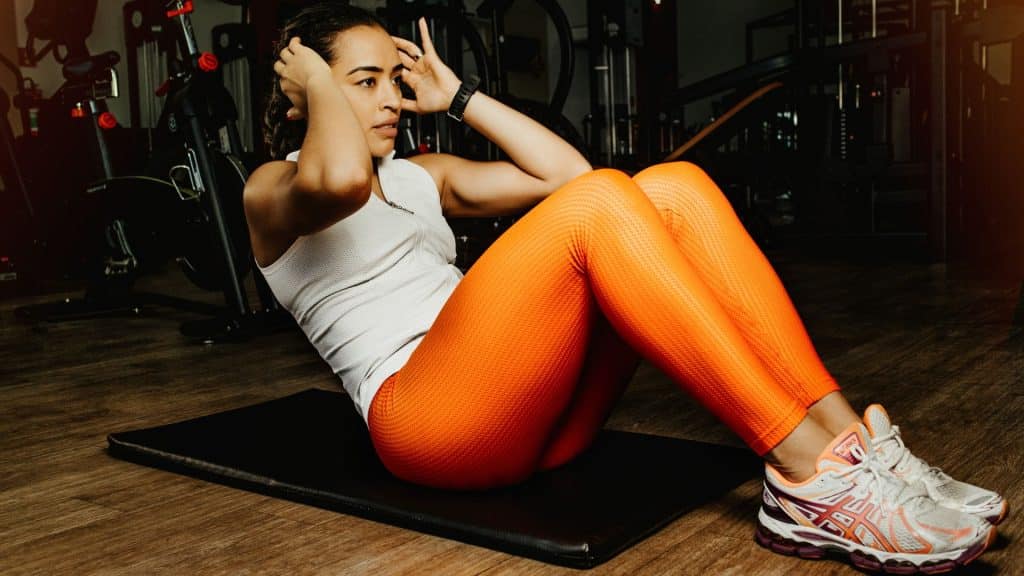
Janda sit-ups are a variation of the traditional sit-up that emphasizes core strengthening while minimizing strain on the hip flexors.
This exercise targets your abdominal muscles and can help improve posture and stability.
How to Perform
- Lie on your back with your knees bent and your feet flat.
- Place your hands behind your head, keeping your elbows pointed out.
- Have a partner hold your feet down or secure them under a stable object.
- Engage your core and lift your upper body off the ground, bringing your chest towards your knees.
- Slowly lower your upper body back to the starting position.
- Repeat for the desired number of repetitions.
9. Javelin Throw with Medicine Ball
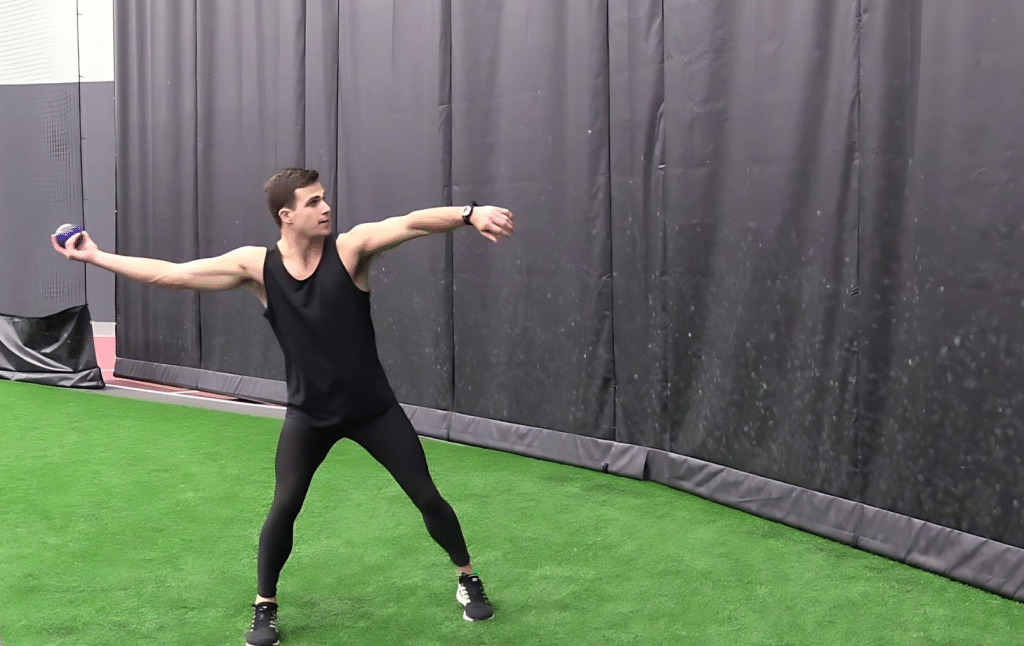
The javelin throw with a medicine ball is a dynamic exercise that targets your core and improves rotational strength.
This movement is particularly beneficial for athletes involved in throwing or rotational sports.
How to Perform
- Stand with your feet shoulder-width apart, holding a medicine ball with both hands at your chest.
- Rotate your torso to one side, bringing the medicine ball back and down towards your hip.
- Explosively rotate your torso forward, releasing the medicine ball in a throwing motion.
- Retrieve the medicine ball and repeat the movement on the opposite side.
- Continue alternating sides for the desired number of repetitions.
10. Jefferson Curls

Jefferson curls improve flexibility and mobility in your posterior chain, including hamstrings, glutes, and lower back.
This movement can help alleviate tension and improve posture.
How to Perform
- Stand on a raised platform with your feet shoulder-width apart and your toes pointing forward.
- Slowly bend forward at the hips, allowing your arms to hang down and your chin to tuck towards your chest.
- Continue bending forward, rounding your spine, and reaching your hands towards your toes.
- Once you’ve reached your maximum range of motion, slowly reverse the movement, stacking one vertebra at a time until you’re back in the starting position.
- Repeat for the desired number of repetitions.
11. Jefferson Deadlift
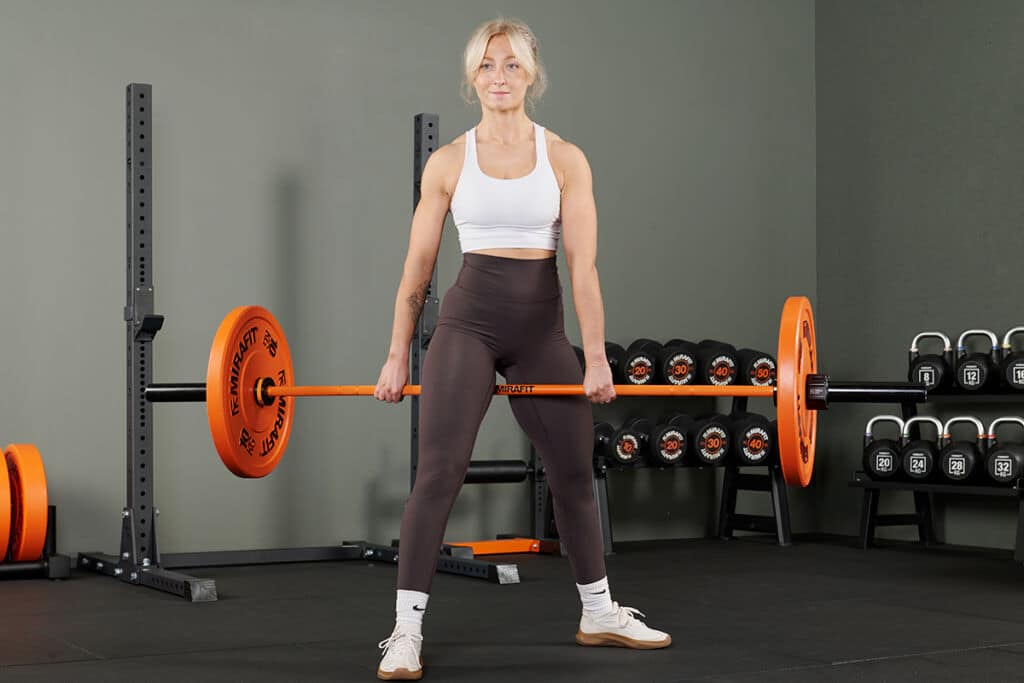
The Jefferson deadlift is a unique variation that challenges balance, coordination, and anti-rotational strength.
This exercise targets your glutes, hamstrings, and core while improving overall stability.
How to Perform
- Stand with one foot on either side of a barbell, with your feet hip-width apart.
- Bend your knees and hinge at the hips, reaching down to grasp the barbell with a mixed grip (one hand pronated, one hand supinated).
- Engage your core and lift the barbell by extending your hips and knees, keeping your back straight and your chest up.
- Once standing upright, slowly lower the barbell back to the ground by hinging at the hips and bending your knees.
- Repeat for the desired number of repetitions, then switch your stance so the opposite foot is forward.
12. Jefferson Squat

The Jefferson squat is a lower-body exercise that primarily targets your quadriceps muscles while engaging your glutes, hamstrings, and core.
This variation emphasizes your quads more than a traditional back squat.
How to Perform
- Stand with one foot on either side of a barbell, with your feet slightly wider than hip-width apart.
- Bend your knees and hinge at the hips, reaching down to grasp the barbell with a mixed grip (one hand pronated, one hand supinated).
- Engage your core and lift the barbell by extending your hips and knees, keeping your back straight and your chest up.
- Once you’re standing upright, slowly lower your body into a squat position by bending your knees and hips.
- When your thighs are parallel to the ground, press through your heels to return to standing.
- Repeat for the desired number of repetitions, then switch your stance so the opposite foot is forward.
13. Jazzercise

Jazzercise is a fun, dance-based cardio workout combining jazz dance, resistance training, and yoga elements.
This lively exercise style can improve cardiovascular endurance, coordination, and overall fitness while providing an enjoyable and social atmosphere.
How to Get Started with Jazzercise
- Find a local Jazzercise class or instructor in your area.
- Wear comfortable, breathable clothing and supportive athletic shoes.
- Arrive early to meet your instructor and familiarize yourself with the studio.
- Follow along with the instructor’s cues and movements, focusing on proper form and technique.
- Stay hydrated throughout the class with the help of hydration aids like Buoy drops, listen to your body, and modify movements as needed.
14. Jerk

The jerk is a weightlifting exercise that focuses on power and speed development.
This movement is typically performed as part of the clean and jerk, but it can also be practiced independently to improve overhead strength and stability.
How to Perform
- Start with the barbell racked on your shoulders, your feet shoulder-width apart, and your elbows pointed forward.
- Dip down slightly by bending your knees, keeping your torso upright.
- Explosively drive the barbell overhead by extending your legs and pushing the bar off your shoulders.
- Drop under the bar by bending your knees and splitting your legs forward and back as the bar reaches its highest point.
- Stand up from the split position, bringing your feet together and the bar overhead with your arms locked out.
- Lower the barbell back to your shoulders and repeat for the desired number of repetitions.
15. Jefferson Wide Stance Squat

The Jefferson wide stance squat is a challenging variation that targets your glutes, hamstrings, and inner thighs while engaging your core and upper body.
This exercise requires balance, stability, and proper form to execute safely.
How to Perform
- Stand with your feet significantly wider than shoulder-width apart and your toes pointing slightly outward.
- Position a barbell between your legs, with your feet equidistant from the bar.
- Bend your knees and hinge at the hips, reaching down to grasp the barbell with a mixed grip (one hand pronated, one hand supinated).
- Engage your core and lift the barbell by extending your hips and knees, keeping your back straight and your chest up.
- Once standing upright, slowly lower your body into a squat position by bending your knees and hips, ensuring that your knees track over your toes.
- When your thighs are parallel to the ground, press through your heels to return to standing.
- Repeat for the desired number of repetitions.
Safety Tips and Considerations
1. Warm-Up and Cool-Down Importance
A proper warm-up is essential for preparing your body for physical activity.
It increases blood flow to your muscles, enhances their elasticity, and reduces the risk of strains and sprains.
Additionally, a warm-up improves mental focus and readiness for the workout ahead.
Effective warm-up techniques include dynamic stretches like leg swings, arm circles, and torso twists and light aerobic activities such as brisk walking or slow jogging.
Sport-specific drills that mimic the movements of the upcoming exercises can also be incorporated.
2. Listen to Your Body to Prevent Injury
Understanding and responding to your body’s signals is crucial for preventing injuries.
It’s essential to differentiate between discomfort, a natural part of the exercise process, and pain, which can indicate potential injury.
Be aware of signs of overtraining, such as persistent fatigue, decreased performance, and irritability. These are indications that your body needs rest and recovery.
Conclusion
Incorporating J exercises into your fitness routine is a fun and effective way to jumpstart your journey toward better health and well-being.
Remember to prioritize safety by warming up, listening to your body, and using proper form.
As you progress, you’ll find that these J exercises improve your physical fitness and boost your mental resilience and overall happiness.
So, which J exercise will you try first?
Pick one that excites you, and prepare to embrace a more active, vibrant lifestyle.
The journey to a healthier you begins with a jump, jog, or jab!

